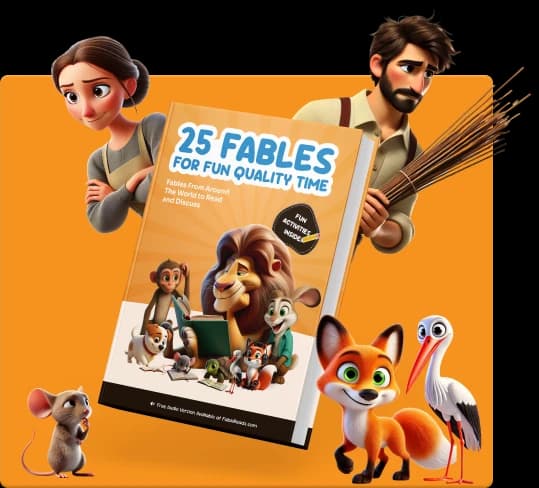Aesop | Greece
El Zorro y El Leñador
Un leñador ayuda a un zorro a esconderse, pero al revelar su escondite, el zorro se marcha sin agradecer.

Érase una vez, un astuto zorro que huía de unos cazadores y sus perros. El zorro necesitaba escapar, así que corrió hasta la casa de un leñador que estaba cerca. El leñador era un hombre amable y sintió pena por el zorro asustado. Le dijo al zorro que se escondiera en su casa.
Poco después, los cazadores llegaron y tocaron a la puerta del leñador. Le preguntaron si había visto al zorro. El leñador no quería romper su promesa al zorro, pero tampoco quería mentir. Entonces, les dijo a los cazadores que no había visto al zorro, pero al mismo tiempo, señaló en secreto el lugar donde el zorro estaba escondido. Los cazadores no entendieron su señal y agradecieron al leñador antes de ir a buscar en otro lugar.
Cuando creyó que ya no corría peligro, el zorro salió y estaba listo para irse. El leñador esperaba que el zorro le diera las gracias, pero el zorro simplemente comenzó a alejarse. Sorprendido, el leñador le preguntó al zorro por qué no le daba las gracias por su ayuda.
El zorro respondió: "Si realmente querías ayudarme, no habrías dado ninguna señal sobre dónde me estaba escondiendo a los cazadores." Después de decir esto, el zorro volvió al bosque, dejando al leñador pensando en lo que había hecho.
Compra un Libro y Ayuda a Llevar Fábulas al Mundo
Disfruta de 25 fábulas seleccionadas de por vida, impresas. Cada compra apoya historias gratuitas para niños, padres y maestros en todo el mundo en fablereads.com

















